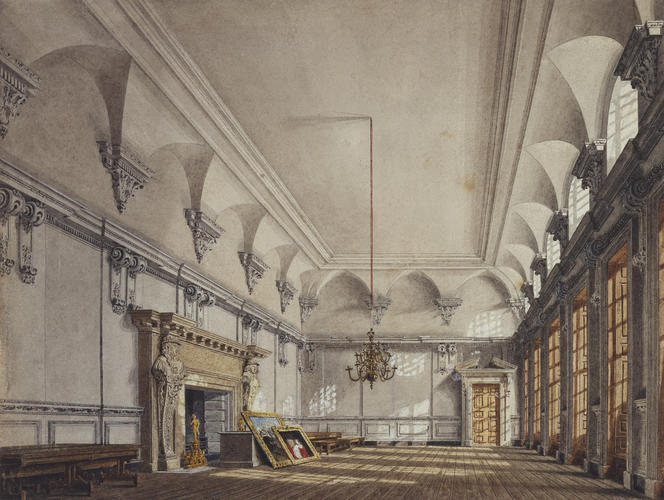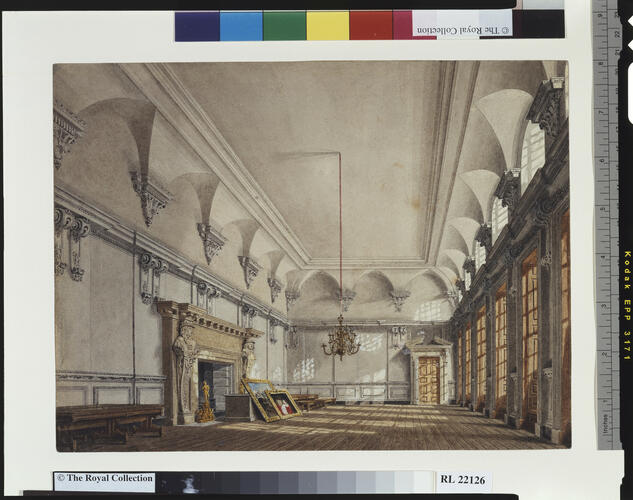Richard Cattermole (1795?-1868)
Hampton Court Palace: The Queen’s Guard Chamber 1819
Watercolour with touches of bodycolour over pencil | 20.2 x 26.8 cm (sheet of paper) | RCIN 922126
-
A watercolour of the Queen's Guard Chamber at Hampton Court, with two pictures leaning against a chest to the left.
The appearance of this room - called the ‘Banqueting Hall’ by Pyne - well demonstrates the state of Hampton Court by the end of George III’s reign. Since the death of Queen Caroline in 1737 no sovereign or consort had lived there and many of the paintings and furnishings were transferred to other royal residences. The main rooms remained maintained and furnished, for the benefit of the visitors who made appointments to view the royal apartments. But other rooms - as here - were no more than store rooms.
The Queen’s Guard Chamber was the first room in the suite of Queen’s Apartments on the first floor of the palace, commenced by Sir Christopher Wren for Mary II in the 1690s. The Queen’s rooms were arranged around the north and east sides of Fountain Court, in the eastern area of the palace. The behatted figures either side of the chimneypiece are intended to represent Yeomen of the Guard, who would have stood in the Guard Chamber when the court was in residence. The chimneypiece was probably designed by Sir John Vanbrugh in the reign of George I. At the time, this room was used by the Prince of Wales (the future George II).
Catalogue entry adapted from George III & Queen Charlotte: Patronage, Collecting and Court Taste, London, 2004Provenance
Probably acquired by George IV
-
Creator(s)
-
Medium and techniques
Watercolour with touches of bodycolour over pencil
Measurements
20.2 x 26.8 cm (sheet of paper)
Other number(s)
RL 22126









